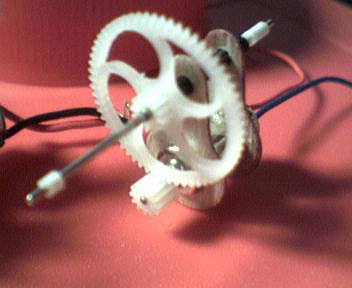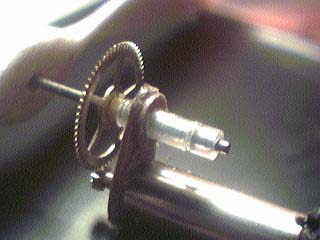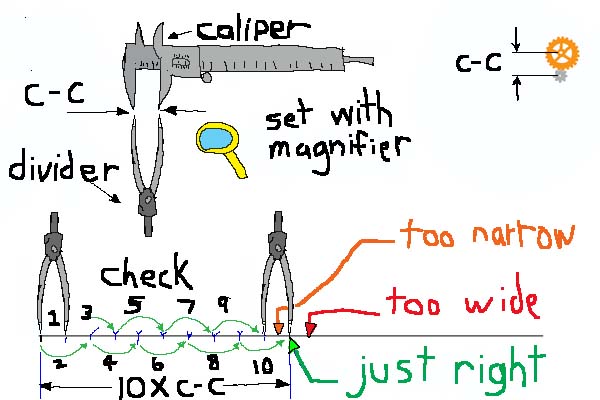Gearboxes |  |
Gears
New Billy's Micro Store Gearboxes for sale!
Gears on micro RC model airplanes range from 0.4 mod bit gears to smaller watch gears.
Didel has started selling 0.2 module plastic gears which are great for small models
using the 20maH lithium polymer battery. Didel also supply a range of 0.3 module gears
that are great for 6mm pager power as well as M20. BSDMicro sells the Didel gears as well
as Falcon gearboxes. If you want to make your own gearboxes You can find 0.4 module gears
on micro RC cars. 24 hour Kitchen timers and clocks usually have gears in them ranging
from 0.25 module to 0.3 module. For 4mm pagers you can make gearboxes using watch gears.

|
An example of a lightweight homemade gearbox.
This gearbox was constructed by Robert Guillot.
Weight of gearbox including motor is 0.64g
Gears - 0.2 mod Didel gears 12t pinion 60t spur.
Notice the gear has been lightened.
The spiral spokes can be cut with a hobby knife.
Further lightening can be accomplished by sanding
the gear thinner and using carbon fiber rod shaft.
motor - 4mm 28 ohm motor.
The uprights are 1/64 ply.
The prop shaft is music wire.
The thrust tube is carbon fiber.
A short peice of teflon tube press
fitted on the rear keeps the shaft from
slipping out when running.
|
Here is another example of a lightweight gearbox.
This gearbox was constructed by me.
Motor - heavier 4mm 13 ohm long pager.
Gears - about 0.125 mod brass watch gears
ply upright, teflon tube thrust bearing.
Allthough the motor is heavier than in the previous
example the gearbox weighs about the same.
The gearbox coul also be lightened further using a CF shaft
and thrust tube.
|

|
In making micro models it is good to think lightweight.
A good choice of materials for gearboxes using 6mm or 4mm motors
are as follows
uprights(the material between the motor and thrust tube) - 1/64" ply or thicker balsa
thrust tube - carbon fiber tube,or aluminum tube with brass or teflon bushings
prop shaft - Carbon fiber rod, or music wire
Now how in the world do you calculate the distance between the gears?
Gear Center Calculator
Mod = module = the lenght in mm, of the pitch circle diameter per tooth
PCD = Pitch Circle Diameter
PCD(s) = PCD of spur
PCD(p) = PCD of pinion
C = Center Distance, this is the calculated value of the center to center distance
MA = Mesh Allow Distance, this is how much you want to add to C to allow the gears to run smoothly
Didel recomends 0.02mm for 6.67:1 and lower ratio 0.3mod gears
For the 0.2 module gears the mesh allow distance is 0.01mm
Formulas:
Mod = OD /(N+2)
PCD = N x Mod
C = (PCD(s) + PCD(p)) / 2
Enter in Values and click outside of the last box you entered values in to calculate.
Form calculates mod, C and C + MA
Once you have the C + MA distance
You may find it hard to measure out the distance with a ruler.
I learned this technique at RC groups.
Set a divider as close as you can get to the center to center distance.
On a sheet of paper mark out a line with 2 dots spaced 10 times the center to center distance.
Use a caliper to mark your dots on the line.
Now step out your divider 10 paces on the line.
If the divider falls short of the 10x mark, open up the divider and try again.
If the divider goes too far then it is set too wide, close the divider and try again.
If the divider hits right on the mark then you have it set right. You can now mark your ply
with the divider and start drilling or reaming the holes.
Here's a diagram that may help.



